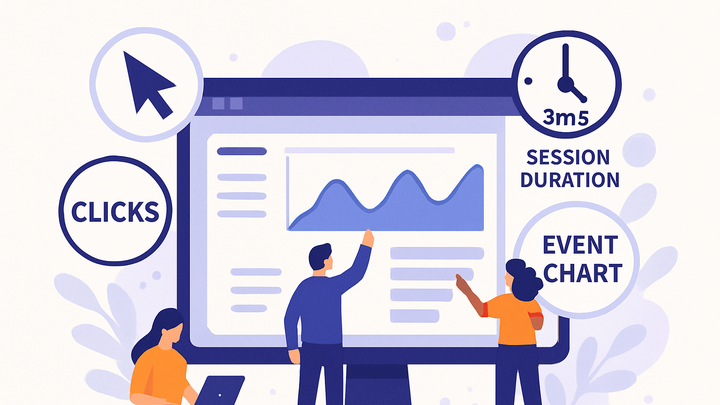Published on 2025-06-22T03:08:03Z
What is Engagement? Examples for Engagement
In analytics, Engagement refers to the ways users interact with your website or app beyond simply viewing a page. It encompasses metrics such as time spent, scroll depth, clicks, form submissions, and custom events. Robust engagement tracking helps you understand user behavior, measure content relevance, and optimize for conversions. Different analytics platforms—like PlainSignal and Google Analytics 4 (GA4)—offer varied approaches for capturing engagement, from cookie-free event-based models to sophisticated session-based algorithms. By analyzing engagement, you can identify friction points, improve user experience, and drive business outcomes.
Engagement
Engagement measures how users interact with your site or app, including time, actions, and events.
Definition of Engagement in Analytics
Engagement in analytics captures user interactions that indicate active involvement with digital content. Unlike passive metrics like pageviews, engagement metrics reflect meaningful actions.
-
Active vs passive metrics
Active metrics include clicks, form submissions, and video plays, whereas passive metrics involve page or screen views without further action.
-
Why engagement matters
High engagement correlates with content relevance and user satisfaction, leading to better retention and conversion rates.
Types of Engagement Metrics
Common engagement metrics help quantify different facets of user behavior, from simple interactions to in-depth session analysis.
-
Session duration
Measures the total time a user spends in a session. Longer sessions often signal deeper engagement.
-
Scroll depth
Tracks how far users scroll down a page, indicating content consumption and interest level.
-
Custom event interactions
Monitors specific actions defined by the site owner, such as button clicks, video views, or downloads.
Examples with SaaS Products
Implementation of engagement tracking varies across platforms. Below are practical examples using PlainSignal and Google Analytics 4.
-
PlainSignal (cookie-free analytics)
PlainSignal offers simple, privacy-friendly engagement tracking without cookies. Insert the following snippet in your site’s
<head>to start capturing engagement events:-
Tracking code snippet
<link rel="preconnect" href="//eu.plainsignal.com/" crossorigin /> <script defer data-do="yourwebsitedomain.com" data-id="0GQV1xmtzQQ" data-api="//eu.plainsignal.com" src="//cdn.plainsignal.com/plainsignal-min.js"></script>
-
-
Google analytics 4 (GA4)
GA4 automatically tracks key engagement events like page views, scrolls, outbound link clicks, and file downloads. You can also define custom events via
gtag.jsor Google Tag Manager.
Best Practices for Measuring Engagement
To ensure reliable engagement insights, follow these best practices.
-
Define clear event naming conventions
Use consistent, descriptive names for events (e.g.,
video_play,form_submit) to simplify analysis. -
Set engagement thresholds
Determine meaningful thresholds (e.g., session > 30 seconds) to filter out low-value interactions.
-
Regularly audit tracking implementation
Periodically verify your tracking setup to catch dropped or duplicated events.
